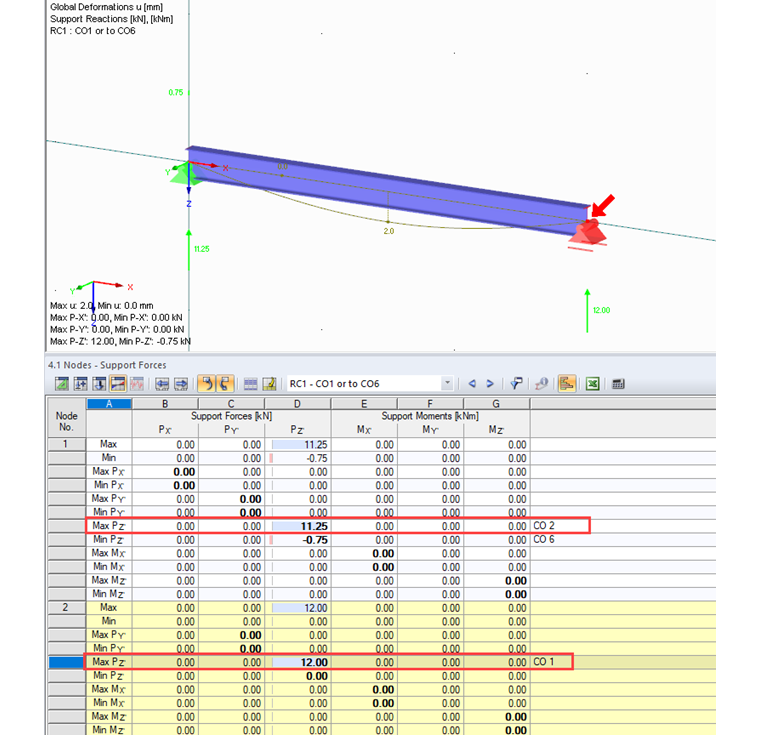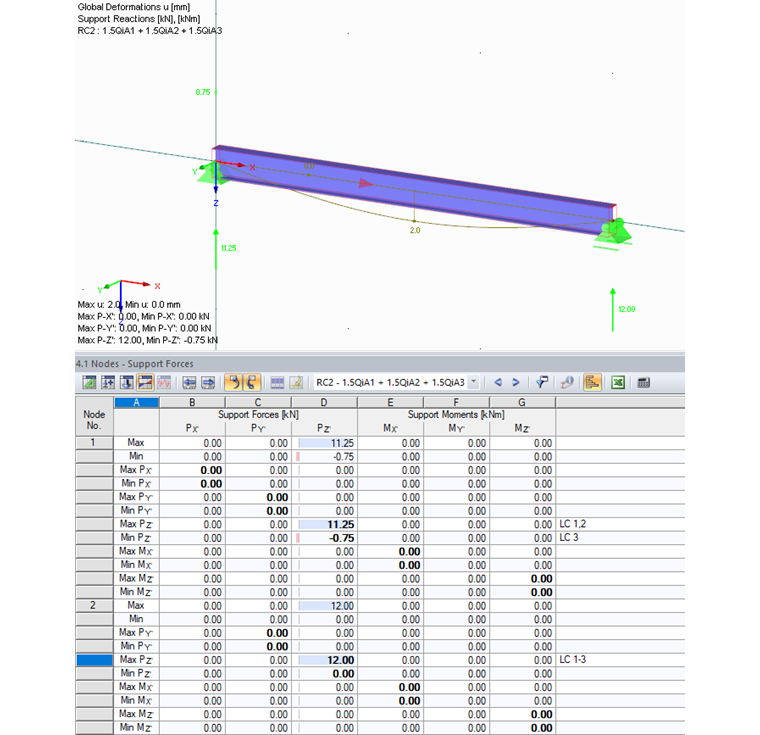A resultant requires a specific combination of loads that cannot be provided by result combinations.
The problem is apparent in the following example. A single-span beam is subjected to three different load cases. For the support at Node 1, the result envelope of the 6 possible load combinations gives the maximum P‑Z of 11.25 kN based on the result of CO2 (see Image 01). The support at Node 2 has the maximum P‑Z of 12 kN, based on the result of CO1. However, the resultant of 23.25 kN does not exist in any of the involved load combinations and is therefore too large (maximum CO 1 and CO 2 with 22.5 kN).
The situation is similar to the pure result combination of the load cases that have the same maximum values P‑Z of the Nodal Supports 1 and Nodal Support 2. However, it is not apparent here that the resultant would give incorrect results.
For this reason, a resultant is not used for result combinations, as the results may be incorrect.

